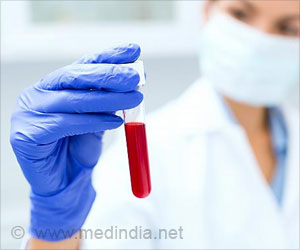umbilical cord blood transplants may offer blood cancer patients better outcomes than bone marrow transplants
University of Minnesota researchers report that umbilical cord blood transplants may offer blood cancer patients better outcomes than bone marrow transplants. This is the first study that directly compares matched bone marrow, which is currently considered the preferred graft, with matched and mismatched umbilical cord blood.
In this study, the investigators compared outcomes of pediatric leukemia patients who received unrelated bone marrow transplants with those who received umbilical cord transplants. While all bone marrow donors were matched, nearly all cord blood donors were mismatched.The main objective of the research was to compare the results after cord blood and marrow transplantation and provide guidelines to transplant physicians on the selection of the best donor for children with leukemia. Remarkably, mismatched cord blood performed as well as matched bone marrow as measured by leukemia-free survival rates, providing the degree of mismatch was limited and the number of cord blood cells available was sufficient.
Furthermore, study participants who received matched cord blood had a 20 percent higher survival rate than matched bone marrow recipients, though the number of matched cord blood transplants was small.
Furthermore, study participants who received matched cord blood had a 20 percent higher survival rate than matched bone marrow recipients, though the number of matched cord blood transplants was small.
The research appears in the June 9, 2007, issue of The Lancet with John E. Wagner, M.D., professor of Pediatrics and director of the University of Minnesota Medical School’s division of Pediatric Hematology/Oncology and Bone Marrow Transplantation, as senior investigator.
The study was done in collaboration with the National Cord Blood Program of the New York Blood Center, New York. Mary Eapen, M.D., associate professor of Pediatrics at the Medical College of Wisconsin and Associate Scientific Director of the CIBMTR, is the first author.
Advertisement
The research suggests that it will become more important to invest in cord blood banks that meet certain standards in relation to cell dose (or volume of the transplanted cells) and Human Leukocyte Antigen (HLA) diversity.
Advertisement
Wagner added that increasing the inventory will increase the chance of finding donors for ethnic and racial minorities currently underrepresented in volunteer marrow registries worldwide.
While the study showed that umbilical cord blood took longer to rebuild the blood-making cells in the body, it was associated with a lower risk of graft versus host disease, a potentially lethal complication, especially when HLA types are mismatched. Rates of leukemia relapse also are lower with mismatched umbilical cord blood transplants. This study also showed that in addition to having a good match, higher cell doses for umbilical cord blood transplants improved survival rates.
The study was done by extensive review of clinical data from transplant centers around the country and reported to the CIBMTR at the Medical College of Wisconsin, Milwaukee and the National Cord Blood Program at the New York Blood Center. The analysis included transplant outcomes in 785 children younger than 16 who had the diagnosis of acute lymphoblastic leukemia (ALL) or acute myeloid leukemia (AML).
Source-Eurekalert
JAY/C











